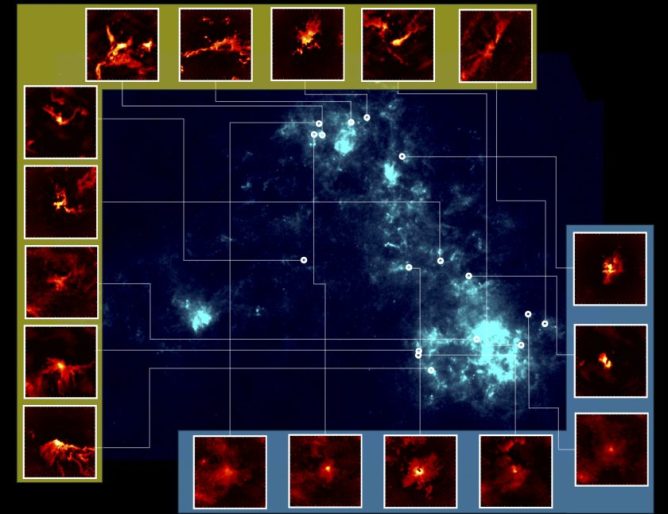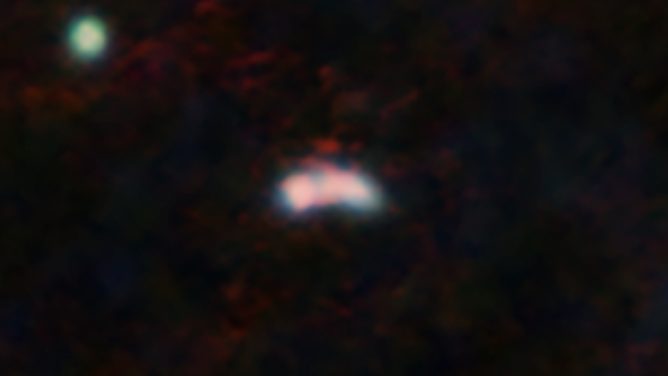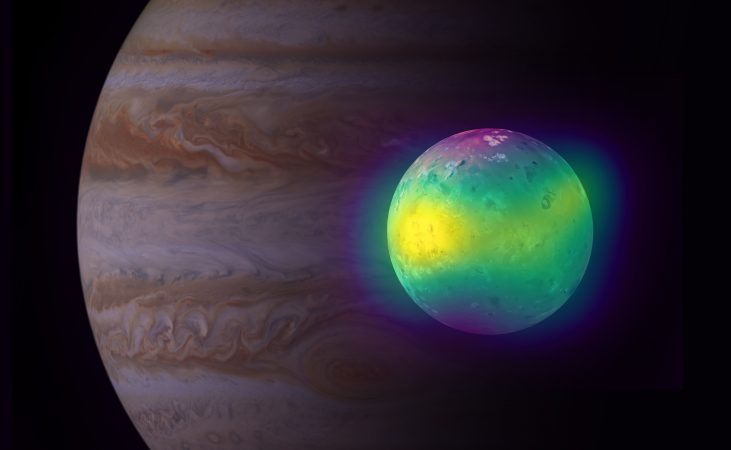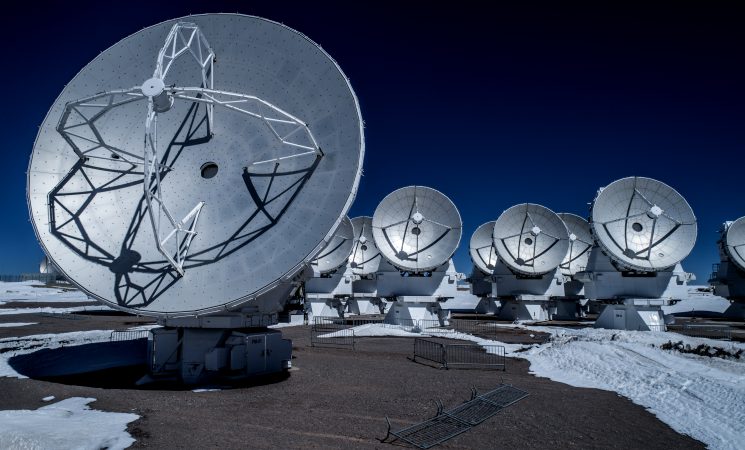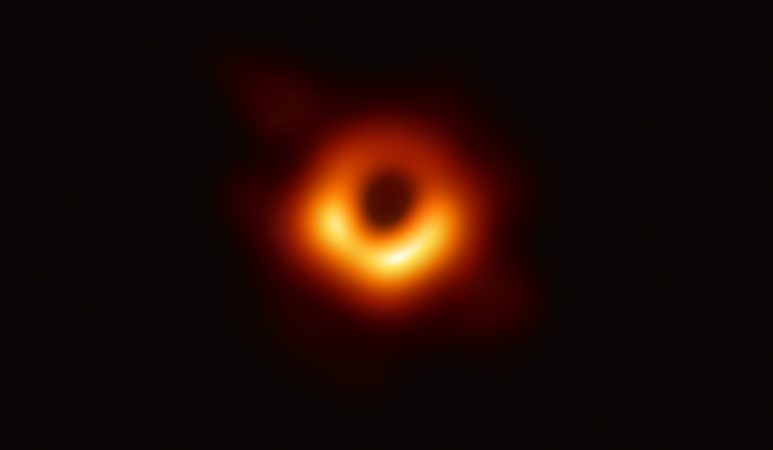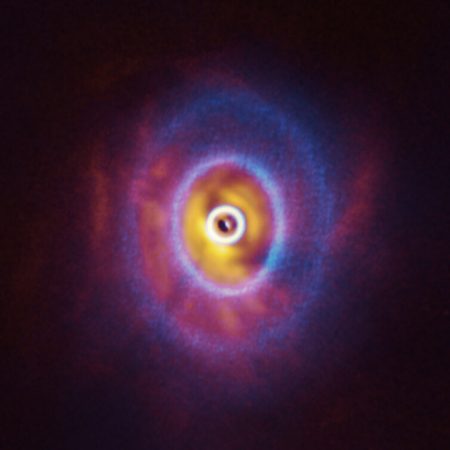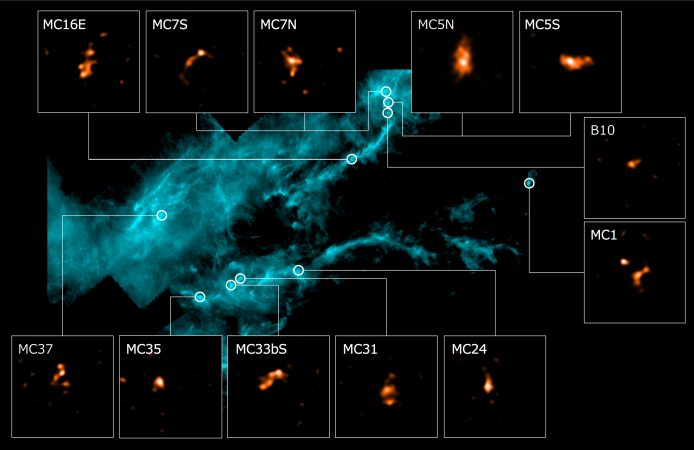This article is based on the press release issued by the Kavli Institute for the Physics and Mathematics of the Universe (Kavli IPMU, WPI) and the Kavli Institute for Astronomy and Astrophysics at Peking University, on February 7, 2025.
An international team led by Kavli IPMU Professor John Silverman has found dark matter dominating the halos of two supermassive black holes in galaxies roughly 13 billion light years away. Their study gives new insight into the relationship between dark matter and supermassive black holes when the universe was still very young, and how galaxies have evolved until today.
The first person to discover that dark matter played an important role in galaxies was astronomer Vera Rubin, who in the 1970s, noticed that the outer parts of local galaxies were rotating at higher speeds than expected, forming what was later named a flat rotation curve. If galaxies were only made up of stars and gas, and obeyed Newton’s laws, the outskirts of a galaxy would move slower than the peak velocity closer to the galaxy’s center. Rubin’s observations could only make sense if there were a large amount of invisible mass, later called dark matter, that surrounded the galaxy like a halo, allowing stars and gas anywhere far from the galaxy center to move at higher velocity. Furthermore, dark matter assembly so far back in the universe has never been observationally constrained and remains unknown, despite its fundamental importance to our understanding of the Universe.
The research team have studied the dark matter content of supermassive black holes about 13 billion light years away. “Vera Rubin provided the first evidence for dark matter using the rotation curves of nearby local galaxies. We’re using the same technique but now in the early universe,” said Silverman.
Made possible using data from the Atacama Large Millimeter/submillimeter Array (ALMA) and the ionized carbon (C+) emission line, the researchers were able to uncover the gas dynamics of two quasar host galaxies at redshift 6. Velocity changes with radius in the galaxy are captured by blue-shifted gas (moving towards the researchers), and the red-shifted gas (moving away) (Figure 1).

Figure 1. Left: Gas distribution of ionized carbon (C+) on the halo scale of P009-10 as shown by the color image and black contours. Nuclear gas distribution, centered on the quasar (large black cross), is shown by the magenta contours. Right: Velocity field of the C+ emission from -200 (in blue; moving towards us) to +200 (in red; moving away from us) km/s indicating coherent rotation in a massive dark matter halo. (Credit: Fei et al.)
By studying the rotation curves of each galaxy, they found dark matter made up about 60 per cent of its total mass. Interestingly, the rotation curves in the distant universe reveal a decrease in the galaxy outskirts, meaning a low fraction of dark matter. But the data taken by Fei and Silverman’s team shows a flat rotation curve, similar to the massive disk galaxies close to Earth, which indicates more dark matter is required to explain the high velocities (Figure 2).
The team’s findings shed light on the intricate relationship between dark matter and supermassive black holes. They offer a crucial piece of the puzzle in understanding how galaxies evolved from the early universe to the structures we observe today.
This research was published in the Astrophysical Journal as “Assessing the dark matter content of two quasar host galaxies at z∼6 through gas kinematics.”

Figure 2. Rotation curves of distant galaxies. Fei et al. data, in red and blue, remains relatively flat (i.e., high), similar to local massive disk galaxies at z~0 (dashed grey line) that need extended dark matter to explain their high velocities. The results from other galaxies at redshift~2-3 (in gray data points) show a rotation curve that decreases at the outskirts. This leads to a low dark matter fraction. (Credit: Fei et al.)
The Atacama Large Millimeter/submillimeter Array (ALMA), an international astronomy facility, is a partnership of ESO, the U.S. National Science Foundation (NSF) and the National Institutes of Natural Sciences (NINS) of Japan in cooperation with the Republic of Chile. ALMA is funded by ESO on behalf of its Member States, by NSF in cooperation with the National Research Council of Canada (NRC) and the National Science and Technology Council (NSTC) in Taiwan and by NINS in cooperation with the Academia Sinica (AS) in Taiwan and the Korea Astronomy and Space Science Institute (KASI).
ALMA construction and operations are led by ESO on behalf of its Member States; by the National Radio Astronomy Observatory (NRAO), managed by Associated Universities, Inc. (AUI), on behalf of North America; and by the National Astronomical Observatory of Japan (NAOJ) on behalf of East Asia. The Joint ALMA Observatory (JAO) provides the unified leadership and management of the construction, commissioning and operation of ALMA.
Links
Researchers find dark matter dominating in early universe galaxies (The Kavli Institute for the Physics and Mathematics of the Universe)
Researchers find dark matter dominating in early universe galaxies (The Kavli Institute for Astronomy and Astrophysics at Peking University)

